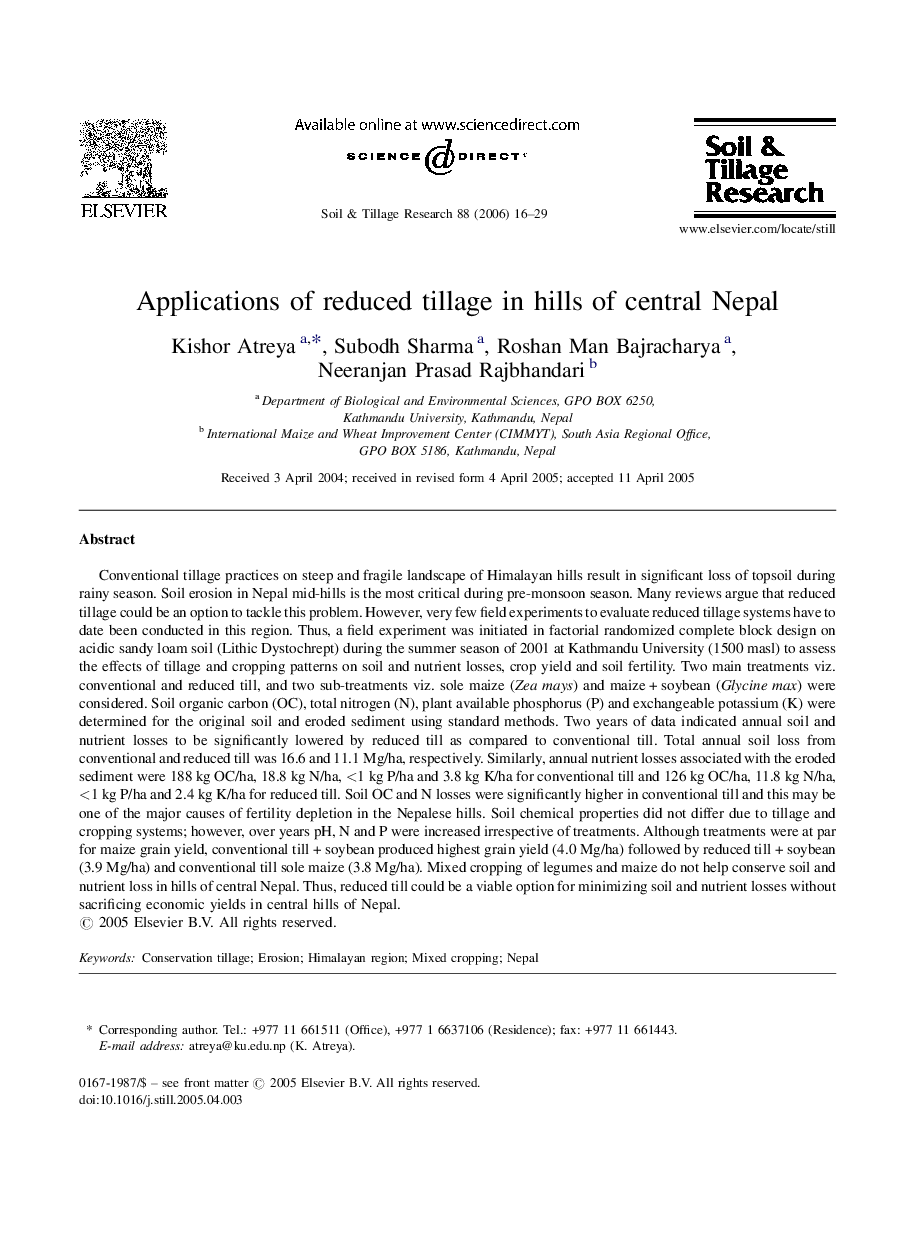| کد مقاله | کد نشریه | سال انتشار | مقاله انگلیسی | نسخه تمام متن |
|---|---|---|---|---|
| 306945 | 513127 | 2006 | 14 صفحه PDF | دانلود رایگان |

Conventional tillage practices on steep and fragile landscape of Himalayan hills result in significant loss of topsoil during rainy season. Soil erosion in Nepal mid-hills is the most critical during pre-monsoon season. Many reviews argue that reduced tillage could be an option to tackle this problem. However, very few field experiments to evaluate reduced tillage systems have to date been conducted in this region. Thus, a field experiment was initiated in factorial randomized complete block design on acidic sandy loam soil (Lithic Dystochrept) during the summer season of 2001 at Kathmandu University (1500 masl) to assess the effects of tillage and cropping patterns on soil and nutrient losses, crop yield and soil fertility. Two main treatments viz. conventional and reduced till, and two sub-treatments viz. sole maize (Zea mays) and maize + soybean (Glycine max) were considered. Soil organic carbon (OC), total nitrogen (N), plant available phosphorus (P) and exchangeable potassium (K) were determined for the original soil and eroded sediment using standard methods. Two years of data indicated annual soil and nutrient losses to be significantly lowered by reduced till as compared to conventional till. Total annual soil loss from conventional and reduced till was 16.6 and 11.1 Mg/ha, respectively. Similarly, annual nutrient losses associated with the eroded sediment were 188 kg OC/ha, 18.8 kg N/ha, <1 kg P/ha and 3.8 kg K/ha for conventional till and 126 kg OC/ha, 11.8 kg N/ha, <1 kg P/ha and 2.4 kg K/ha for reduced till. Soil OC and N losses were significantly higher in conventional till and this may be one of the major causes of fertility depletion in the Nepalese hills. Soil chemical properties did not differ due to tillage and cropping systems; however, over years pH, N and P were increased irrespective of treatments. Although treatments were at par for maize grain yield, conventional till + soybean produced highest grain yield (4.0 Mg/ha) followed by reduced till + soybean (3.9 Mg/ha) and conventional till sole maize (3.8 Mg/ha). Mixed cropping of legumes and maize do not help conserve soil and nutrient loss in hills of central Nepal. Thus, reduced till could be a viable option for minimizing soil and nutrient losses without sacrificing economic yields in central hills of Nepal.
Journal: Soil and Tillage Research - Volume 88, Issues 1–2, July 2006, Pages 16–29